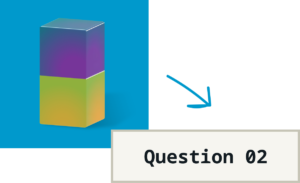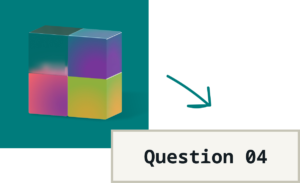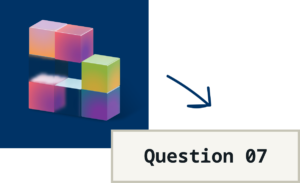Generative AI is rapidly advancing in capabilities and features. And just as quickly, L&D leaders are moving from research and initial experiments with AI to proof-of-concept projects and larger initiatives.
Exciting times—and a lot to keep up with!
We’re fortunate to work with clients across multiple industries, from hospitality to consumer goods, which gives us a great vantage point to see the top focus areas for AI in learning and development.
Read on to find out how your peers are prioritizing and investing in AI, including real-world examples:
L&D leaders know that right on the heels of approving new technology, the next question from business leaders will be: When can we get the training?
Training isn’t limited to across-the-board basics—every team will have specialized training needs depending on how they use AI tools. Every department and business unit will have unique opportunities and risks, which means a LOT of custom training needs.
Here are two projects we’ve recently wrapped for clients to help them address specific, urgent needs for AI training.
Large online retail organization: Inclusive and responsible gen AI
As our client prepares for extensive discussions and promotions surrounding the expanded use of AI within the organization and in its products, it recognizes AI’s potential risks, especially to marginalized and vulnerable communities.
Our client is committed to advocating for the implementation of safeguards and ethical considerations within AI technologies in addition to promoting its product. The training we are creating with this client is a key step toward achieving that goal.
Through this training, we’re equipping sales and marketing teams with a comprehensive understanding of responsible AI practices. The training’s focus is to upskill the audience on how to look for potential issues regarding fairness, privacy, inclusivity, equity, and diversity when using generative AI with the goal of helping customers use AI responsibly.
Consumer lending company: Embracing the benefits of AI
The AI revolution is pushing everyone in every field to reconsider how they’ve been working and to embrace the possibilities that AI holds. In finance, AI can shift decisions that in the past were based on personal judgment to a place of greater fairness and equity.
Moving beyond the tried-and-true old ways of doing things is not easy, and our client is supporting finance professionals in making this shift. The training we are helping to produce includes certification training on AI basics, its applications in credit assessment, and detailed learning on how to navigate ethical considerations, with high-quality video from experts in the field.
Rollouts of AI tools are moving quickly—if you need support in creating training for global or specialized needs, reach out and we’ll connect you with an expert Solution Architect.
#2: Creating High-Impact Learning Experiences
What gets our clients really excited about the use of AI for learning? The ability to create completely tailored learning experiences that adapt to text and voice input from learners.
No more awkward role plays. No more ineffective multiple-choice questions. Learners can interact with training in unprecedented ways—and AI is making the dream of adaptive learning a cost-effective reality.
We’re working with multiple clients to create AI-powered training, including:
- Problem resolution and service recovery for a major hospitality client
- Customer service for text-based response via a concierge chatbot
- Coaching skills for leaders of a top consumer goods brand
These simulations harness advanced technology in dynamic training scenarios, and they offer secure settings to practice essential skills.
And, fitting skills practice into a busy schedule is now possible with AI-powered training.
Some of the key features include:
- Speech-to-text technology: Learners engage with realistic avatars by using their own voices to drive the conversation.
- Dynamic conversations: We’ve evolved our AI technology from a single interaction point to the ability to have a dynamic back-and-forth conversation between the learner and the avatar.
- AI feedback tool: This tool provides personalized feedback to all learners individually based on how they responded and how well they applied their skills.
- Sentiment analysis: This technology allows us to assess the delivery of how each learner responds. We can give learners real-time feedback on how friendly, confident, or aggressive their responses sound.
- Playback functionality: Learners can play back an audio recording of their responses, giving them an opportunity for self-reflection.
- Immersive WebXR technology: This technology creates a fully immersive, highly engaging experience that can be accessed via desktop or VR headset, enabling scaling to our clients entire enterprise
Check out this video of our work with Hilton creating high-impact, AI-powered coaching simulations.
#3: Streamlining Learning Content Creation with AI
Among the most sought-after expected benefits of AI in learning and development are the abilities to create content faster, improve efficiency, and reduce costs1. No doubt you’re looking to do the same!
We’re working on multiple clients on projects that include using gen AI to help:
- Analyze content
- Create learning objectives
- Develop scenarios
- Formulate assessment questions
In addition to text-based content development, we’re using artificial intelligence to create multimedia. In a recent project, we were able to create a rich, immersive environment by creating background graphics using AI tools. And for our online training client, we significantly reduced production costs while keeping engagement high.
Online training company: Generating video avatars using AI
Video content is particularly expensive and time-consuming, and it runs the risk of additional costs (reshoots!) if the course needs to be updated.
Our client, a top provider of online training, wanted to streamline video development (no more onsite filming!), reduce total production costs, and capitalize on learning curiosity around AI.
Utilizing AI, our subject matter expert quickly crafted their avatar, fine-tuning it for lifelike realism. Once created, the course scripts were seamlessly integrated, generating talking-head-style videos within minutes.
These videos were then ready for post-production treatment with the SweetRush team and dramatically reduced our timeline—a game-changer! Not only did we deliver our top-notch SweetRush content, but we also delivered substantial savings in production costs, passed on to our client. To top it off, learners remained captivated as they witnessed AI in action.
Interested in proven strategies for using AI to improve speed to market and reduce costs? Get in touch!
¹ https://donaldhtaylor.co.uk/research_base/focus02-talk-to-action/
#4: Quality Matters! Optimizing the Combo of HI (Human Intelligence) and AI
The race is on to find the best use cases for AI in learning and development, and yet we can’t brush real challenges under the rug in our eagerness to reap the benefits. Accuracy is still a real concern as the debate continues—can “hallucinations” be engineered away?²
Another concern that we and our clients are grappling with is the quality of content produced by Large Language Models (LLMs) versus that crafted by humans.
SweetRush is pioneering explorations in this area by conducting modern iterations of the Turing Test³; we are analyzing whether LLM-generated content stands on par with human-generated material.
Through these studies, we harness the deep industry knowledge of Subject Matter Experts and Learning Experience Designers to pinpoint the respective traits of human and AI outputs. Is a “soul,” worldview, or authentic human perspective absent in AI-generated text, and if so, how might this impact the overall quality and reception of the content (i.e. if it were integrated into a training program, for instance)?
Our approach ensures a balanced evaluation, creating scenarios that channel the strengths of both AI and human input, from deep factual knowledge to rich personal insights.
₂ https://www.theverge.com/2024/5/15/24154808/ai-chatgpt-google-gemini-microsoft-copilot-hallucination-wrong
³ https://plato.stanford.edu/entries/turing-test/
#5: Securing Talent with AI Expertise
The war for talent has reached the AI shores. Research conducted by Randstad found a 2,000% increase in roles requiring artificial intelligence skills in 2023⁴. In some US states, there are more than 10 job ads for every AI professional.⁵
Yet our clients need talent—and in the early stages of adoption, they need specialized talent with the expertise to consult on AI policies, governance, roadmaps, and application. You are likely in a similar place, navigating a lot of new territory and needing help to cut through the confusion and keep your company and teams on track.
Experienced consultants can help you answer mission-critical questions, such as:
- How can your people use AI? (And what’s off limits?)
- What tools are you allowing your team to use?
- How are you mitigating risks of copyright infringement and issues of confidentiality?
- What about accuracy, ethics, and bias?
- How are you discovering how to bring efficiencies and innovation by using AI?
To get your arms around these issues and others, you need the expertise and support of an AI consultant, and we’ve built a bench of experts ready to support our clients.
⁴ https://www.unleash.ai/artificial-intelligence/randstad-chro-demand-for-gen-ai-skills-up-2000-in-2023/
⁵ https://www.ox.ac.uk/news/2023-10-09-expert-comment-ai-demand-booming-right-skills-and-technology-glue-guys
Navigating Exciting and Disruptive Times
Did these priorities resonate with you? There’s no doubt they will continue to evolve at pace with the rapid advancements in AI technology.
We’re helping so many clients address their unique challenges with targeted AI solutions and expertise, and we’d be honored to help you as well. Please reach out and let’s discuss your needs!
















